How and when to prepare birch brooms for the bath?
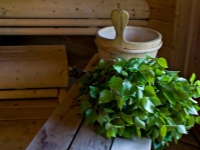
An indispensable attribute of the Russian bath has always been considered a broom. It is made from the branches of various trees, shrubs and other plants. One of the traditional and popular types is a birch broom.
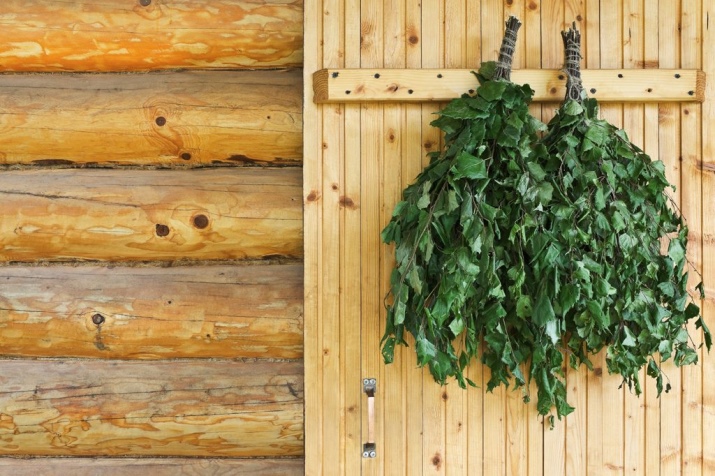
Terms of birch broom making
Any broom, be it oak or aspen, linden or rowan, not only helps to steep well, but also has beneficial properties for the body. Birch broom is not an exception and its benefits are undeniable.
Since ancient times it has been used as an indispensable treatment for many diseases. The aromatic essential oils of the birch leaves and bark have antibacterial and regenerating properties and help to heal small wounds and scratches more quickly, facilitate the course of such diseases as dermatitis, psoriasis and acne, reducing skin rashes.
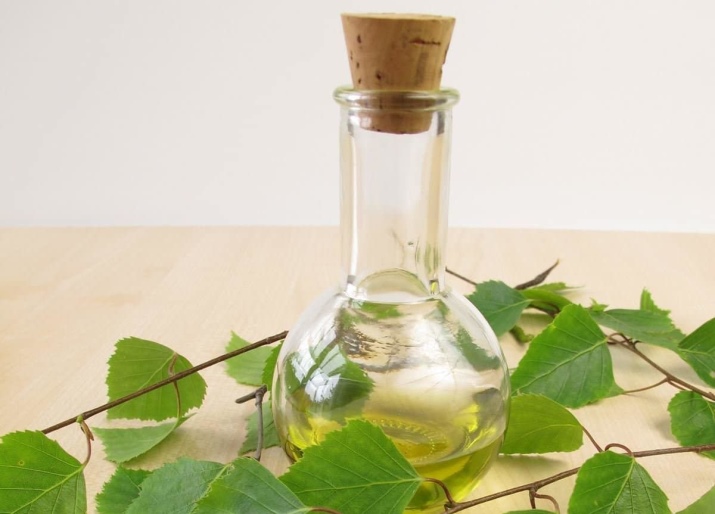
The oils, soaking and moisturizing the skin, make it velvety and soft, increase elasticity and tone.
Massage with a birch broom helps to reduce muscle pain, improves overall health and vitality. It is very useful for people suffering from lung and bronchial diseases to be heated with birch broom, because birch steam helps to expel phlegm.
The birch broom is indispensable for colds and flu. Its healing properties also include stimulation of kidneys, improving blood circulation, excretion of toxic substances and salts. In addition, birch leaves and bark contain vitamins, useful resins and tannins.
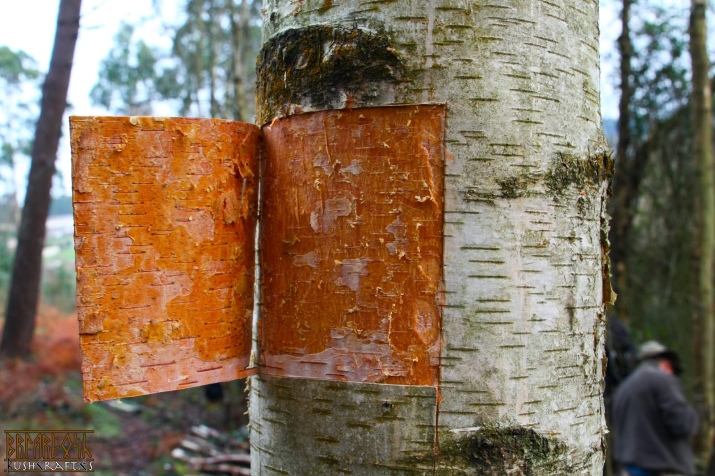
However, in order for all the useful properties to be preserved and have a beneficial effect on the body, it is necessary to properly harvest this accessory. First of all, this applies to the timing of the collection of raw materials for the broom, because the quality, durability, degree of fragrance and softness of the accessory depend on this to a large extent. The most important thing is not to start cutting branches from the birch either too early or too late. The leaves on the birch tree should be hardened, but remain soft.
All lovers of the Russian steam room, who independently prepare birch brooms for the bath, strictly adhere to certain timing. Traditionally birch twigs for the broom are harvested starting from the Feast of the Holy Trinity, and the harvest lasts for 2 weeks. This holiday does not have a fixed date, as it is celebrated 50 days after Easter, but it usually happens in June.

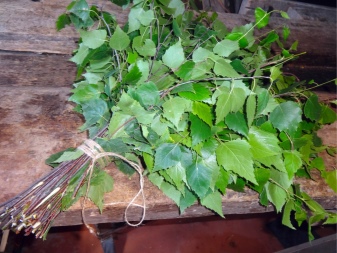
This is the month when the plants are in their peak bloom, when they accumulate the maximum amount of useful substances. Earlier harvesting is not recommended.
Prematurely cut branches have weak leaves, and they fall off while drying. Broom from such branches turns out unstable and short-lived.
You should not make branches in July and August, because at that time leaves are already old and starting to fade, losing their useful properties. In addition, the broom from such branches will also fall off quickly.
The focus on Trinity is justified for harvesting in the middle belt of Russia. In the south, where spring arrives earlier, the time for harvesting raw materials also comes earlier - the end of May - beginning of June. In the Urals and Siberia, branches are harvested in late June - early July. In addition, you should also take into account the specific weather conditions, when spring comes early or, on the contrary, is delayed.
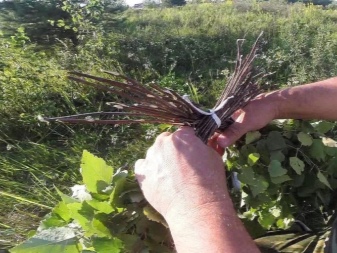
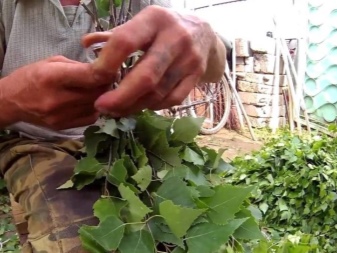
The main reference point for collecting is the condition of the branches of the birch. There is such a folk method of determining the suitability of the tree for cutting branches. To do this, you need to touch the outer surface of the leaf: it should be velvety, have a light patina of delicate fuzz. Branches with hard and rough leaves are not suitable for a broom.
There is another way. It is necessary to pull the birch leaf: if not the whole leaf is torn off, but only a part of it, then from such a birch you can also cut branches for a broom.
Experienced specialists in birch broom knitting also adhere to the following condition: they prepare raw material before the appearance of birch earrings.
Prepare the branches should be in sunny weather. It is not recommended to cut wet branches (immediately after the rain): during drying the leaves will crumble, curl and darken. Later such a broom will acquire an unpleasant smell.
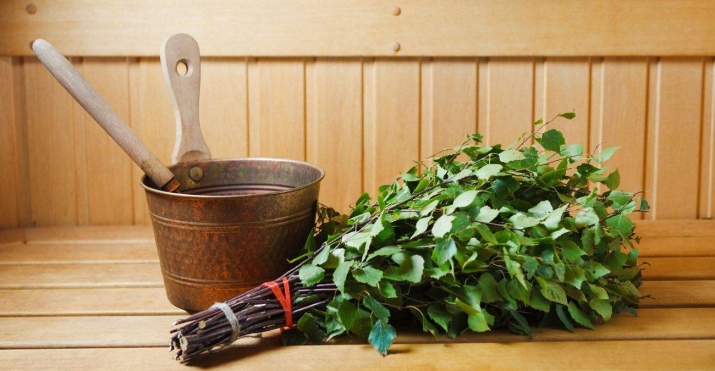
Where is the best place to gather?
The place where the birch trees grow is also of great importance. An important condition - the trees must grow in environmentally friendly areas, away from industrial and other environmentally hazardous objects. Do not cut branches from birch trees growing along highways. In the city you can harvest raw material from birch trees growing in large park areas.
Not every tree is suitable for harvesting twigs. It is not recommended to cut twigs from a large old tree, as its leaves are stiff and do not contain enough useful substances. After drying, the leaves will become even tougher, and it will take a very long time to steaming the product.
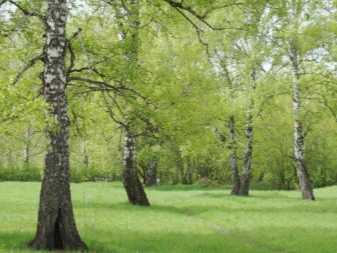
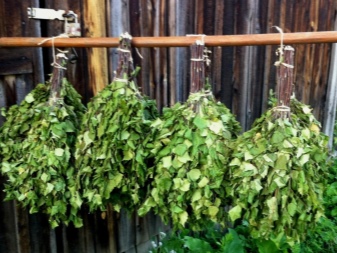
The best birch twigs for bath brooms are the weeping birches, Growing in damp and shady lowlands, especially near rivers, ponds and other water bodies. Choosing a birch you should pay attention to its trunk and crown: it should have a regular shape and be rather thick and sprawling. The trunk should be clean and have no suspicious exudations, outgrowths. The exception is the fungus chaga.
In plantings, you should choose low young birch trees of medium size, which have flexible and thin branches. It is believed that the best properties have 2-year-old branches growing near the ground.

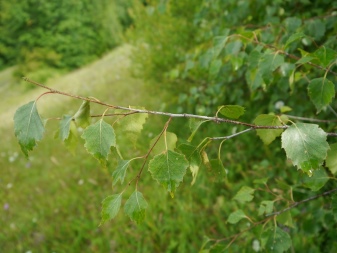
The length of the cut branches should be 50-80 cm. The twigs should be cut with a sharp instrument such as scissors, knife or secateurs.
For more mature birch trees, the twigs are taken from the middle part of the tree where the branches are younger. You can't cut too many branches from one birch tree, because it can damage the tree.
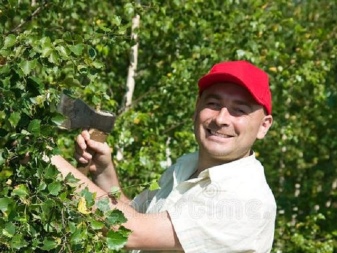
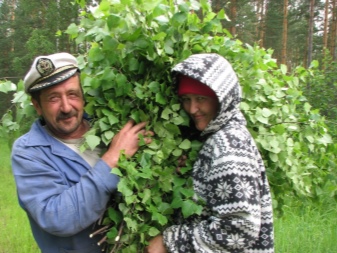
How to dry?
The place and conditions for drying directly affect the quality of the bath accessory. The place intended for this should be in the shade and be inaccessible to direct sunlight. If the broom is dried in the sun, then after the first steaming, the leaves will fall off the branches. Dry, cool and darkened rooms are ideal, for example: an attic, a barn or other outbuildings. Strong draughts are also unacceptable, but rooms should be ventilated.
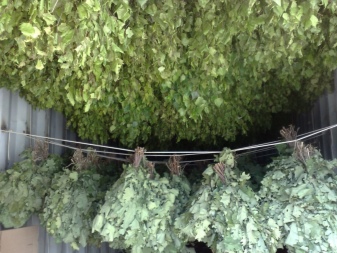
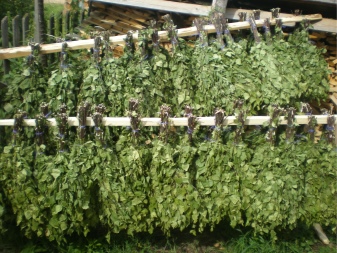
It is allowed to dry brooms in different ways. You can specially equip a shed with racks or stretched ropes for hanging. The roof of a barn or other building is also suitable for drying. It should be done in this way:
- first the roof surface is covered with hay;
- Then the brooms are spread out at a certain distance from each other;
- The hay is laid out again on top of the billets.
There is also a way of drying in a haystack. In this case, the hay should be fresh and fairly dry. The billets are laid in layers in a circle, with the leaves spread out and directed towards the center of the stack. Each row of brooms is covered with a layer of hay. The bath accessories dried in this way retain the maximum aroma, color and shape.
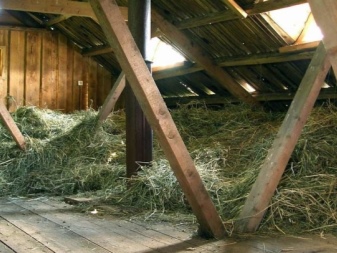
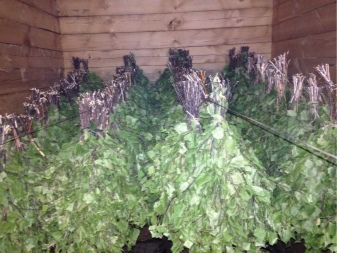
To dry the branches evenly, the billets should be periodically turned over - once every 2-3 days. After about 7 days from the beginning of drying, the accessories should be stacked tightly in rows. Blanks, pressed against each other, will acquire a flat fan-shape.
When the products become flat, they are tied in twos and hung in a room with good ventilation on a rope in such a way that one broom is slightly higher than the other. In this form, the blanks are left until the branches are completely dry.
You can also dry them on a veranda, a pergola or even under trees by hanging them on ropes. In a city apartment, pre-wrapped in paper can be dried on a balcony or in a mezzanine.
A well-dried broom has a uniform light green color of the leaves and has a pleasant aroma.
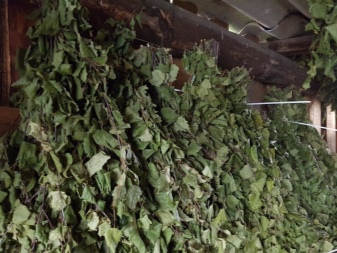
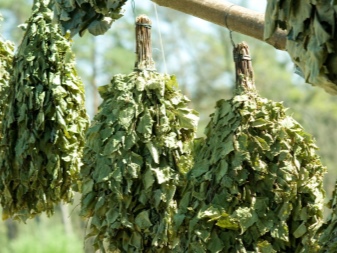
How to knit properly?
Knitting products is not difficult - just need to follow certain rules. Each broom requires about 20-30 twigs. Knitting brooms includes five stages.
- Preparation of the branches. Cut branches should be placed on the sackcloth in the shade and hold for 1-2 days so that they slightly shrivel up. From such twigs it is easier to form brooms. Then the branches are sorted, separating larger and branched from straight and small twigs.

- Determining the size of the accessory. The size depends on personal tastes. Some people prefer large products, others prefer small ones. However, there are requirements for the length of the blank: traditionally it ranges from 40-80 cm. Practice has shown that longer or shorter products are inconvenient to use.
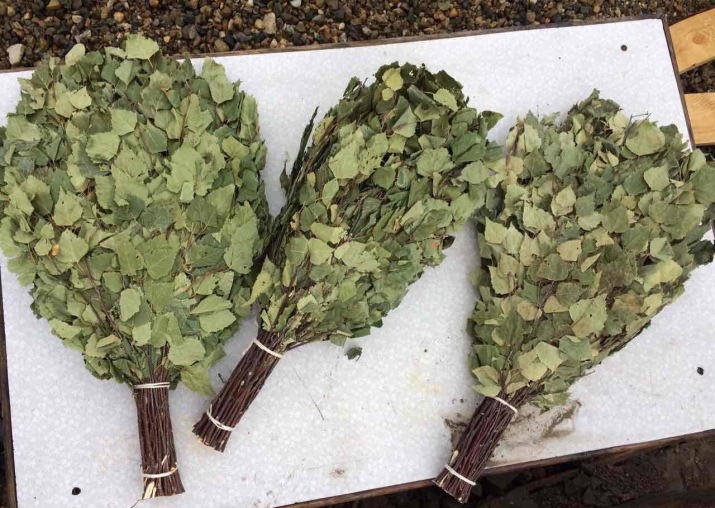
- Cleaning the twigs. It is necessary to remove all leaves and knots from the lower part of the branches, because the handle will be formed here. The length of the handle can also vary depending on the preferences of the user. But usually it is about 1/3 of the entire length of the piece. The length of 15 cm is optimal.
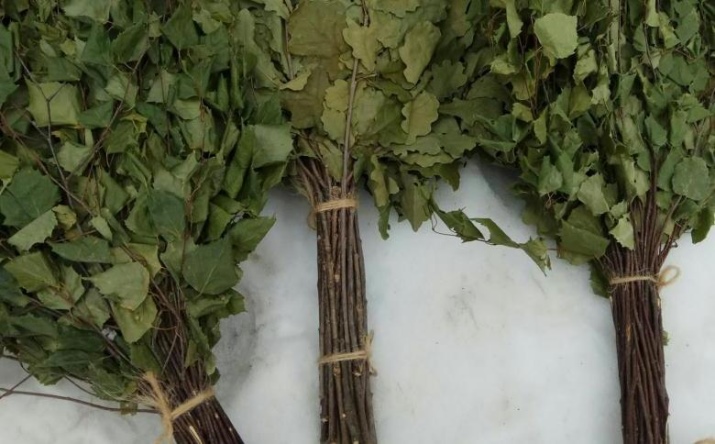
- Shaping the product. First of all, the central frame part is formed. For her pick up 2-3 of the thickest and strongest branches with branching. On the sides of the frame placed thinner twigs curve inward so that the structure of its shape resembled a fan. This shape of the product is very convenient for massage: the broom seems to encircle the human body. The leaves on the twigs should be located in the same direction. The broom shouldn't be too heavy, otherwise it will be inconvenient to use it. The thickness of the handle should not exceed 5 cm. All branches protruding from it should be trimmed, making the end flat.
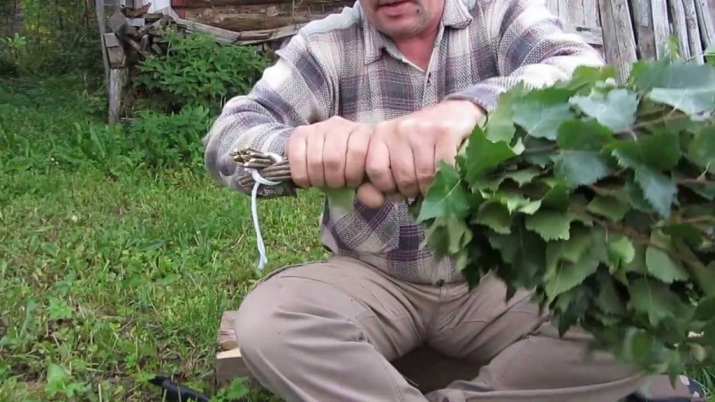
- Handle and broom knitting. The brooms assembled in this way are fixed with twine, rope or kapron thread. It is not allowed to knit brooms with a wire, because it can hurt you during the massage. The first (not very tight) winding is done close to the edge of the handle. After that, all the twigs of the workpiece should be divided into 2 parts and each one fixed with twine, making a complete turn. Then the handle is fixed in 2-3 more places. Fixing should not be too tight, but quite strong, otherwise the broom will crumble when used. The end of the handle should be wrapped with a cloth to protect your hands from blisters.
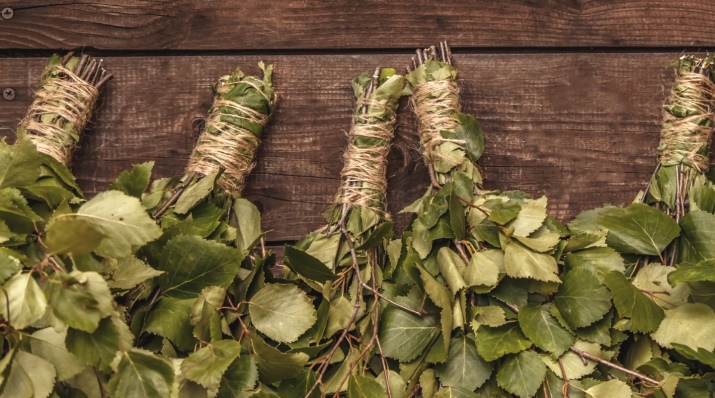
How to store?
Proper storage of prepared products is a guarantee of their safety.
- Store in a hanging form in different rooms: a shed, a garage, an anteroom, an attic. The room should be fairly spacious, dry, darkened and well ventilated. As for the attic, not everyone can be used for storing products. If the roof is not well insulated, the summer heat in the room will be too stuffy and hot, which will cause the brooms to dry out: the branches and leaves will become very stiff. At the first steaming such leaves will fall off. Hang the accessories at a distance of about 20-30 cm from each other, to ensure good ventilation. Do not place the billets near a source of fire, because the brooms can easily ignite. The room should be free of various smells, especially harsh and chemical ones.
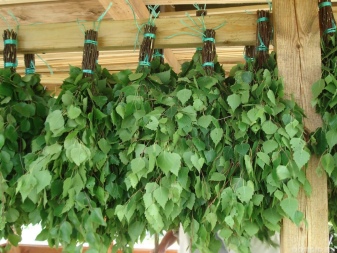
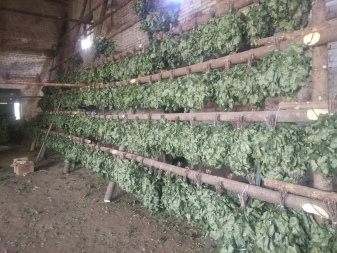
- Place the billets under the press. This is the most popular way of storage. Blanks are spread out on a flat surface, put a wide board on top and press down with a heavy weight.
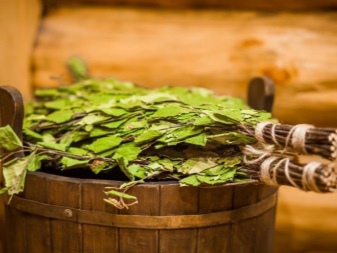
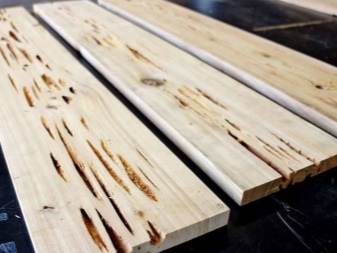
- Storage in wrapped form. Polyethylene film or paper is used as a wrapper. All wrapped products are stacked on the mezzanine or in cardboard boxes with holes. In urban conditions, you can store brooms in this way in glazed loggias and balconies. If the billets pour over coarse salt, the storage period can increase up to 2 years.
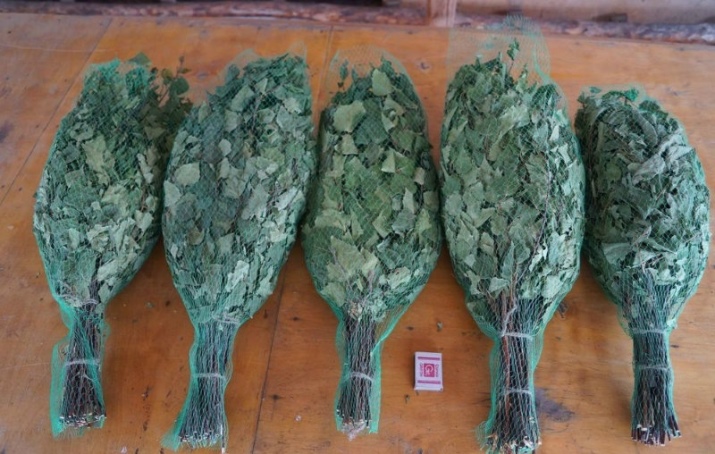
- Using the Finnish technology. It lies in the fact that the product is subjected to shock freezing at low temperatures (above -40 degrees). Before freezing, billets are placed in airtight packaging (eg, plastic bags). However, this method requires large-sized freezers, so it is most often used in mass production for sale.
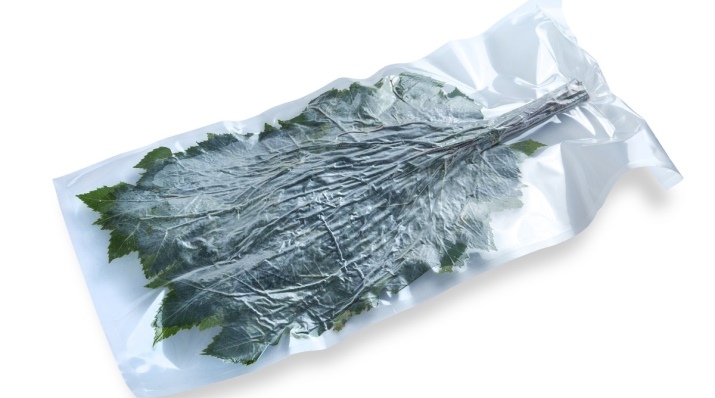
- Storage in a haystack. In rural areas, the best storage place is a haystack. The hay provides optimal conditions: the right temperature and ventilation, and it also absorbs moisture well. The billets are stacked in layers in a row in a circle, with the handles facing outward. Each layer is covered with hay.
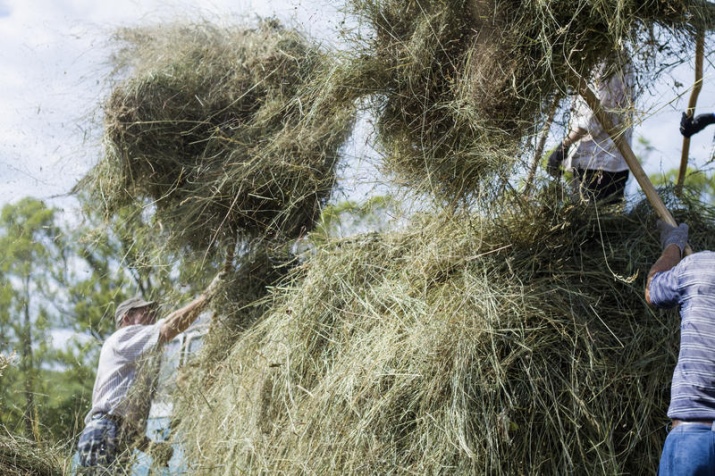
After a visit to the bath there is no need to throw away the used bathing attribute at all. It should be washed in warm water, and at home hang it to dry in a ventilated room. The blank can serve another 2-4 times.
Of course, you can buy a ready-made broom. But true lovers of the Russian steam room prefer self-made and properly prepared products.
How to properly prepare birch brooms for the bath, see below.




